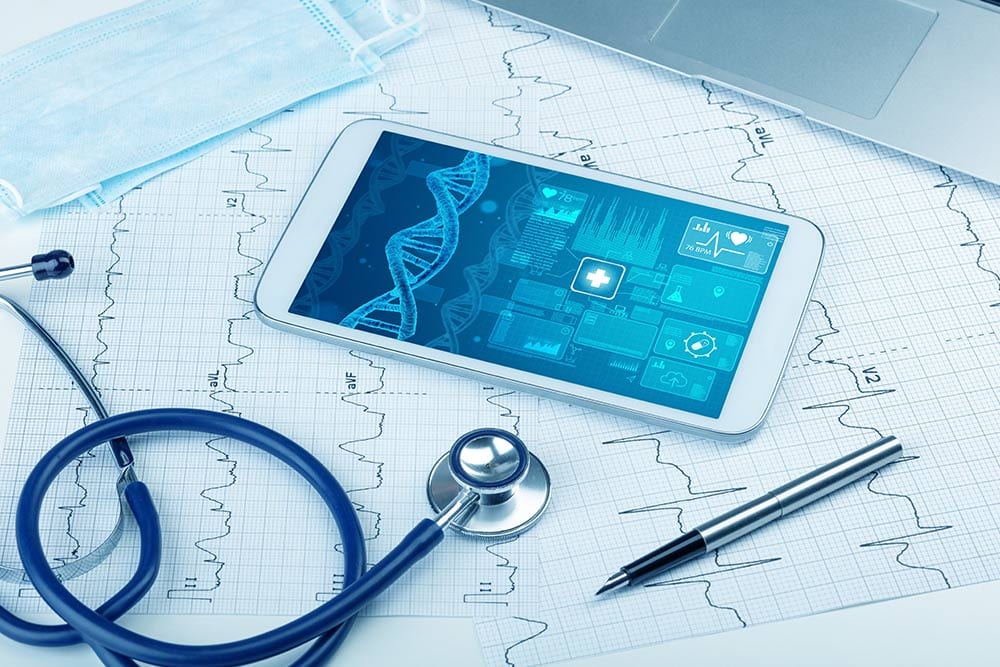

The healthcare industry is one of the many industries that processes an enormous number of documents—patient medical records, health insurance reimbursements, and healthcare claims, among others. Using paper forms can be cumbersome, inefficient and expensive when you need to distribute, retrieve, organize, and search for data. So in 1991, in answer to the Bush administration’s concern for rising healthcare costs, the Workgroup for Electronic Data Interchange (WEDI) was formed. It was instrumental for the enactment of the Health Insurance Portability and Accountability Act (HIPAA) of 1996.
Before HIPAA, the healthcare industry was using over 400 medical forms in various formats, most of which were paper based. Because healthcare data management was highly manual and ad hoc, protecting and securing healthcare information was a major concern. For example, in the US, “privacy regulation consisted of a series of differing, industry-specific laws.” The Center for Democracy and Technology described the pre-HIPAA period as total absence of national health privacy law, federal limits on healthcare information processing, and federal right allowing patients to access their health care information.
The enactment of HIPAA was intended to address these gaps.
Healthcare data began to be transmitted in standard formats — primarily via the electronic data interchange (EDI) protocol X12 or EDI. Enabling HIPAA EDI transactions helped address security and compliance issues and fill other gaps such as information inaccuracy and patients’ lack of access to their healthcare information.
Understanding electronic data interchange in healthcare – how it works, what are its benefits, and what are the key considerations for implementation – can help healthcare professionals and organizations fully capitalize on it.
Electronic data interchange in healthcare allows the exchange of computer-processable healthcare data in a standardized format and secure manner among healthcare professionals, healthcare institutions, and patients. For example, it enables healthcare providers to send claim status requests and obtain information using a standard transaction set for organized, compliant information exchange.
Electronic data interchange healthcare transactions, however, are not email exchanges; they involve all electronic transmission of healthcare data between computer systems and applications. Different modes of healthcare EDI transactions delivery include “web-based EDI, point-to-point EDI, mobile EDI, EDI VAN, and EDI via AS2.”
Healthcare EDI uses standard transaction sets such as EDI Health Care Claim Transaction Set (837), EDI Health Care Claim Payment/Advice Transaction Set (835), EDI Benefit Enrollment and Maintenance Set (834), EDI Health Care Eligibility/Benefit Inquiry (270), and EDI Health Care Claim Status Request (276). Using these EDI HIPAA transaction sets, healthcare professionals and institutions can reap various benefits such as standardization, minimized transaction and other costs, security, and improved productivity.
According to MarketsandMarkets (as cited by PR Newswire), the healthcare EDI market is forecast to “reach $1,681.1 million by 2018.” This substantial growth is accounted for by the various advantages it provides:
These benefits, however, can only be fully tapped if healthcare institutions weave a data-centric healthcare EDI solution into their organizational fabric.
When implementing EDI systems or solutions, many factors should be considered such as the level of security and compliance the system or solution can provide, ease of integration, and time to value. However, most overlook another key consideration – the raw data behind healthcare information.
Healthcare EDI systems offer a structured organization of healthcare information through EDI HIPAA transaction sets. However, EDI systems require a platform that can pull a tremendous amount of data in an automated, efficient, and secure manner from different departments and system silos, without capturing bad data. Today, with industries moving from a system of record to system of insights, it is necessary to ensure that all healthcare data that goes into the system is secure and of high quality. This can be ensured by leveraging a robust healthcare data management solution based on a data-centric platform for integrating EDI healthcare data.
By enabling a data-centric healthcare EDI, all the benefits of EDI such as security and improved productivity can be maximized. (Learn more about the ALLOY™ Platform, OpenText’s data-centric platform for healthcare, here.)
Technological advancements in and outside of the healthcare industry impact healthcare data management in many ways. For example, mobile technologies have changed the way patient and providers process healthcare information. To keep pace with trends like these, EDI systems should be supercharged with a data-centric platform to ensure a high level of data quality and security.